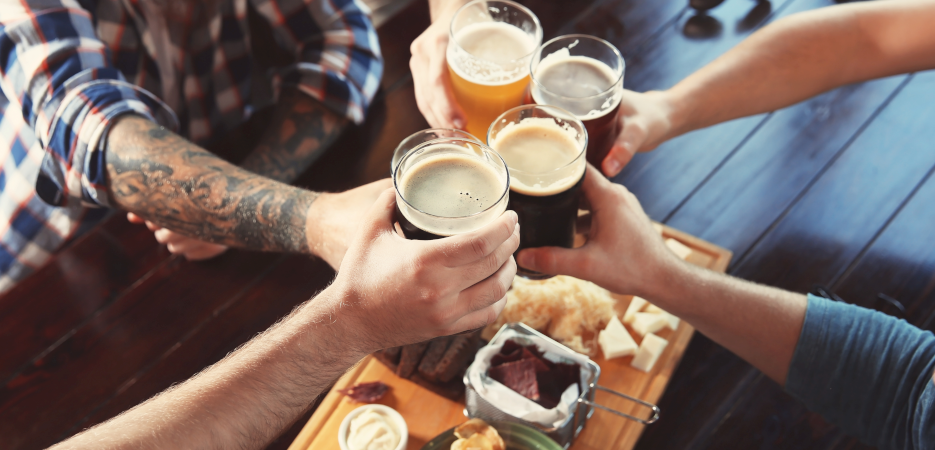Savor the Perfect Beer at Home
Introduction
Imagine this: you’ve finished your day’s tasks, you’re in your most comfortable spot, you open a cold beer, and you let your mind unwind. Summer is beer season—even for occasional drinkers.
Most Popular Beer Types
Lager
Low fermentation, lighter alcohol, clear appearance. Yeast settles at the bottom.
- Pilsner: The most known style, two-thirds of global beer production.
- Bock/Amber/Red Lager: Reddish hue from roasted barley, caramel notes, slightly stronger.
- Dark Lager/Dunkel: Lighter than stout but with chocolate and coffee notes, pairs well with smoked fish.
Ale
High fermentation, shorter process, more intense and complex flavors. Yeast ferments at the top.
- Cream Ale: Blond, refreshing with slightly more intense aromas.
- Pale Ale: Reddish, fruity notes, great with spicy foods.
- India Pale Ale (IPA): Bold, bitter, highly aromatic.
- Abbey Beer: Belgian tradition, higher alcohol (up to 7%), caramel and raisin notes.
- Wheat Beer: Made with wheat, creamy texture, banana or bubblegum hints.
Stout & Porter
Under the Ale category but noted separately for rich chocolate and coffee aromas. Ideal year-round.
- Porter: Chocolate, coffee, and caramel aromas.
- Stout: Dark, creamy, intense roasted coffee flavors.
- Unfiltered: Retains yeast for deeper flavor and cloudy appearance.
What Makes Craft Beer Special
Craft breweries use traditional methods and real malt, avoiding adjuncts like corn or rice. Often unfiltered, unpasteurized, and preservative-free, they offer unique recipes in small batches (500–1000 L/day) with a focus on quality ingredients and bold flavors.
How to Brew Your Own Beer
Homebrewing isn’t as hard as it seems—and you might end up preferring your own batches over store-bought.
- Fermentation vessel with spigot and airlock
- Mixing pot (20–30 L)
- Hydrometer
- Malt grinder (if not buying pre-crushed malt)
- Bottles, caps, and capper
- Hose for bottling
All equipment must be thoroughly sanitized. Optional brew kettles with built-in thermometers and hydrometers simplify the process; otherwise expect 3–4 weeks from mash to drinkable beer.
Serving Beer at Home
Whether bottled, homebrewed, or from a tap, pouring into a glass is a ritual. Choose the right glass to enhance aroma, head formation, and flavor.
Recommended Glassware for Beer
Bierissime Freshness & Effervescence
Ideal for low-alcohol, balanced beers like wheat beers, pilsners, and lagers. Wide opening and tapered bowl develop foam and direct bubbles; narrow base keeps beer cool.
Bierissime Aromas & Flavours
Designed for floral, herbal, or spicy beers like IPAs. Narrow rim captures aromas; flared bowl releases hop and fermentation esters; rounded base enhances bouquet.
Bierissime Power & Texture
Perfect for complex, malt-forward beers (Doubles, Triples, Strong Ales). Rounded bowl emphasizes dense texture; narrow, flared rim separates flavors without harsh alcohol perception; solid base warms high-ABV beer to optimal temperature.


